Indian Railways
From Wikipedia, the free encyclopedia
This article is about the organisation. For general information on railways in India, see Rail transport in India.

"Lifeline of the Nation"
| |
| Type | Company |
|---|---|
| Industry | Railways |
| Founded | 16 April 1853[1] |
| Headquarters | New Delhi, India |
| Area served | India |
| Services | Passenger railways Freight services Parcel carrier Catering and Tourism Services Parking lot operations Other related services |
| Revenue | |
| Net income | |
| Owner(s) | Government of India (100%) |
| Employees | 1.3 million (2012)[3] |
| Parent | Ministry of Railways throughRailway Board (India) |
| Divisions | 17 Railway Zones |
| Website | www.indianrailways.gov.in |
| Indian Railways | |
|---|---|
| Reporting mark | IR |
| Locale | India |
| Dates of operation | 16 April 1853–Present |
| Track gauge | 1676 mm; 1000 mm; 762 mm; 610 mm |
| Electrification | 23,541 km |
| Length | 65,000 km |
| Headquarters | New Delhi, India |
| Website | www.indianrailways.gov.in |
Indian Railways (reporting mark IR / भा. रे) is an Indian state-owned enterprise, owned and operated by the Government of India through the Ministry of Railways. It is one of the world's largest railway networks comprising 115,000 km (71,000 mi) of track over a route of 65,000 km (40,000 mi) and 7,500 stations. As of December 2012, it transported over 25 million passengers daily (over 9 billion on an annual basis). In 2011, IR carried over 8,900 million passengers annually or more than 24 million passengers daily (roughly half of which were suburban passengers) and 2.8 million tons of freight daily. In 2011–2012 Indian Railways had revenues of  1119848.9 million (US$17 billion) which consists of
1119848.9 million (US$17 billion) which consists of  696759.7 million (US$11 billion) from freight and
696759.7 million (US$11 billion) from freight and  286455.2 million (US$4.4 billion) from passengers tickets.
286455.2 million (US$4.4 billion) from passengers tickets.
Railways were first introduced to India in 1853 from Bombay to Thane. In 1951 the systems were nationalised as one unit, the Indian Railways, becoming one of the largest networks in the world. IR operates both long distance and suburban rail systems on amulti-gauge network of broad, metre and narrow gauges. It also owns locomotive andcoach production facilities at several places in India and are assigned codes identifying their gauge, kind of power and type of operation. Its operations cover twenty eight states and seven union territories and also provides limited international services to Nepal,Bangladesh and Pakistan.
Indian Railways is the world's ninth largest commercial or utility employer, by number of employees, with over 1.4 million employees. As for rolling stock, IR holds over 239,281Freight Wagons, 59,713 Passenger Coaches and 9,549 Locomotives (43 steam, 5,197 diesel and 4,309 electric locomotives). The trains have a 5 digit numbering system as the Indian Railways runs about 10,000 trains daily. As of 31 March 2013, 23,541 km (14,628 mi) (36%) of the total 65,000 km (40,000 mi) km route length was electrified.[4]Since 1960, almost all electrified sections on IR use 25,000 Volt AC traction through overhead catenary delivery.
Contents
[hide]- 1 History
- 2 Organisational structure
- 3 Rolling stock
- 4 Freight
- 5 Technical details
- 6 Railway links to adjacent countries
- 7 Types of passenger services
- 8 Accommodation classes
- 9 Notable trains and achievements
- 10 Food
- 11 Problems and issues
- 12 See also
- 13 References
- 14 Scholarly studies
- 15 External links
History[edit]
Main article: History of rail transport in India
The history of rail transport in India began in the mid-nineteenth century. The core of the pressure for building Railways In India came from London. In 1849, there was not a single kilometre of railway line in India. A British engineer, Robert Maitland Brereton, was responsible for the expansion of the railways from 1857 onwards. The Allahabad-Jabalpur branch line of the East Indian Railway had been opened in June 1867. Brereton was responsible for linking this with the Great Indian Peninsula Railway, resulting in a combined network of 6,400 km (4,000 mi). Hence it became possible to travel directly from Bombay to Calcutta. This route was officially opened on 7 March 1870 and it was part of the inspiration for French writer Jules Verne's book Around the World in Eighty Days. At the opening ceremony, the Viceroy Lord Mayo concluded that “it was thought desirable that, if possible, at the earliest possible moment, the whole country should be covered with a network of lines in a uniform system”.[5]
By 1875, about £95 million were invested by British companies in India guaranteed railways.[6] By 1880 the network had a route mileage of about 14,500 km (9,000 mi), mostly radiating inward from the three major port cities of Bombay, Madras andCalcutta. By 1895, India had started building its own locomotives, and in 1896 sent engineers and locomotives to help build the Uganda Railways.
In 1900, the GIPR became a government owned company. The network spread to the modern day states of Assam, Rajasthan and Andhra Pradesh and soon various autonomous kingdoms began to have their own rail systems. In 1905, an early Railway Board was constituted, but the powers were formally vested under Lord Curzon.[7] It served under the Department of Commerce and Industry and had a government railway official serving as chairman, and a railway manager from England and an agent of one of the company railways as the other two members. For the first time in its history, the Railways began to make a profit.
In 1907 almost all the rail companies were taken over by the government. The following year, the first electric locomotive made its appearance. With the arrival of World War I, the railways were used to meet the needs of the British outside India. With the end of the war, the railways were in a state of disrepair and collapse.
In 1920, with the network having expanded to 61,220 km (38,040 mi), a need for central management was mooted by Sir William Acworth. Based on the East India Railway Committee chaired by Acworth, the government took over the management of the Railways and detached the finances of the Railways from other governmental revenues.
The period between 1920 and 1929 was a period of economic boom; there were 41,000 mi (66,000 km) of railway lines serving the country; the railways represented a capital value of some 687 million sterling; and they carried over 620 million passengers and approximately 90 million tons of goods each year.[8] Following the Great Depression, the railways suffered economically for the next eight years. The Second World War severely crippled the railways. Starting 1939, about 40% of the rolling stock including locomotives and coaches was taken to the Middle East, the railways workshops were converted to ammunitions workshops and many railway tracks were dismantled to help the Allies in the war. By 1946 all rail systems had been taken over by the government.
Organisational structure[edit]
Main article: Indian Railway organisational structure
Railway zones[edit]
Indian Railways is divided into several zones, which are further sub-divided into divisions. The number of zones in Indian Railways increased from six to eight in 1951, nine in 1952 and sixteen in 2003.[9][10] Each zonal railway is made up of a certain number of divisions, each having a divisional headquarters. There are a total of sixty-eight divisions.[3][11]
Each of the sixteen zones is headed by a general manager who reports directly to the Railway Board. The zones are further divided into divisions under the control of divisional railway managers (DRM). The divisional officers of engineering, mechanical, electrical, signal and telecommunication, accounts, personnel, operating, commercial, security and safety branches report to the respective Divisional Manager and are in charge of operation and maintenance of assets. Further down the hierarchy tree are the station masters who control individual stations and the train movement through the track territory under their stations' administration.
Zonal railways details[edit]
Recruitment and training[edit]
Main article: Centralised Training Institutes of the Indian Railways
Staff are classified into gazetted (Group 'A' and 'B') and non-gazetted (Group 'C' and 'D') employees.[13] The recruitment of Group 'A' gazetted employees is carried out by the Union Public Service Commission through exams conducted by it.[14] The recruitment to Group 'C' and 'D' employees on the Indian Railways is done through 20 Railway Recruitment Boardsand Railway Recruitment Cells which are controlled by the Railway Recruitment Control Board (RRCB).[15] The training of all cadres is entrusted and shared between six centralised training institutes.
Production units[edit]
Indian Railways manufactures much of its rolling stock and heavy engineering components at its six manufacturing plants, called Production Units, which are managed directly by the Ministry. Popular rolling stock builders such as CLW and DLW for electric and diesel locomotives; ICF and RCF for passenger coaches are Production Units of Indian Railways. Over the years, Indian Railways has not only achieved self-sufficiency in production of rolling stock in the country but also exported rolling stock to other countries. Each of these production units is headed by a general manager, who also reports directly to the Railway Board. The production units are:-
| Name | Abbr. | Year Established | Location | Main products |
|---|---|---|---|---|
| Golden Rock Locomotive Workshops | GOC | 1928 | Trichy | Diesel-electric Locomotives |
| Chittaranjan Locomotive Works | CLW | 1947 | Chittaranjan,Asansol | Electric Locomotives |
| Diesel Locomotive Works | DLW | 1961 | Varanasi | Diesel Locomotives |
| Diesel-Loco Modernisation Works | DMW | 1981 | Patiala | Diesel-electric Locomotives |
| Integral Coach Factory | ICF | 1952 | Chennai | Passenger coaches |
| Rail Coach Factory | RCF | 1986 | Kapurthala | Passenger coaches |
| Rail Spring Karkhana | RSK | 1988 | Gwalior | Passenger coach springs |
| Rail Wheel Factory | RWF | 1984 | Bangalore | Railway wheels and axles |
| Rail Wheel Factory | RWF | 2012 | Chhapra | Railway wheels |
| Rail Coach Factory, Raebareli | RCF | 2012 | Raebareli | Passenger coaches |
Other subsidiaries[edit]
There also exist independent organisations under the control of the Railway Board for electrification, modernisation, research and design and training of officers, each of which is headed by an officer of the rank of general manager. A number of Public Sector Undertakings, which perform railway-related functions ranging from consultancy to ticketing, are also under the administrative control of the Ministry of railways.
There are fourteen public undertakings under the administrative control of the Ministry of Railways,[16] viz.
- Bharat Wagon and Engineering Co. Ltd. (BWEL)
- Centre for Railway Information Systems (CRIS)[17]
- Container Corporation of India Limited (CONCOR)
- Dedicated Freight Corridor Corporation of India Limited (DFCCIL)
- Indian Railway Catering and Tourism Corporation Limited (IRCTC)
- Indian Railway Construction (IRCON) International Limited
- Indian Railway Finance Corporation Limited (IRFC)
- Konkan Railway Corporation Limited (KRCL)
- Mumbai Railway Vikas Corporation (MRVC)
- Railtel Corporation of India Limited (Rail Tel)
- Rail India Technical and Economic Services Limited (RITES)
- Rail Vikas Nigam Limited (RVNL)
- Burn Standard and Co. Ltd (BSCL)
- Braithwaite and Co. Ltd (BCL)
Delhi Metro Rail Corporation Limited (DMRC), that has constructed and operates Delhi Metro network, is an independent organisation not connected to the Indian Railways. Similar metro rail corporations in other cities (except Kolkata Metro in Kolkata) are not connected to the Indian Railways.
Rolling stock[edit]
Locomotives[edit]
Main article: Locomotives in India
Locomotives in India consist of electric and diesel locomotives. Biodiesel locomotives are also being used on experimental basis.[18] Steam locomotives are no longer used, except inheritage trains. Locomotives are also called locos or engines. In India, locomotives are classified according to their track gauge, motive power, the work they are suited for and their power or model number. The class name includes this information about the locomotive. It comprises 4 or 5 letters. The first letter denotes the track gauge. The second letter denotes their motive power (Diesel or Electric) and the third letter denotes the kind of traffic for which they are suited (goods, passenger, mixed or shunting). The fourth letter used to denote locomotives' chronological model number. However, from 2002 a new classification scheme has been adopted. Under this system, for newer diesel locomotives, the fourth letter will denote their horsepower range. Electric locomotives don't come under this scheme and even all diesel locos are not covered. For them this letter denotes their model number as usual.
A locomotive may sometimes have a fifth letter in its name which generally denotes a technical variant or subclass or subtype. This fifth letter indicates some smaller variation in the basic model or series, perhaps different motors, or a different manufacturer. With the new scheme for classifying diesel locomotives (as mentioned above) the fifth item is a letter that further refines the horsepower indication in 100 hp increments: 'A' for 100 hp, 'B' for 200 hp, 'C' for 300 hp, etc. So in this scheme, a WDM-3A refers to a 3100 hp loco, while a WDM-3F would be a 3600 hp loco.
Note: This classification system does not apply to steam locomotives in India as they have become non-functional now. They retained their original class names such as M class orWP class.
As of 31 March 2012, Indian Railways had 5,197 diesel locomotives (increased from 17 on 31 March 1951), 4,309 electric locomotives (increased from 72 on 31 March 1951) and 43 steam locomotives (decreased from 8,120 on 31 March 1951) (see Railway Budget 2012–13 Explanatory Memorandum).
Diesel Locomotives are now fitted with Auxiliary Power Units which saves nearly 88% of Fuel during the idle time when train is not running.[19]
Goods wagons or freight cars[edit]
The number of freight car or goods wagons was 205,596 on 31 March 1951 and reached the maximum number 405,183 on 31 March 1980 after which it started declining and was 239,321 on 31 March 2012. The number is far less than the requirement and the Indian Railways keeps losing freight traffic to road. Indian Railways carried 93 million tonnes of goods in 1950–51 and it increased to 1010 million tonnes in 2012–13.[20]
However, its share in goods traffic is much lower than road traffic. In 1951, its share was 65% and the share of road was 35%. Now the shares have been reversed and the share of railways has declined to 30% and the share of road has increased to 70%.
Passenger coaches[edit]
Indian railways has several types of passenger coaches.
Electric Multiple Unit (EMU) coaches are used for suburban traffic in large cities – mainly Mumbai, Chennai, Delhi, Kolkata, Pune, Hyderabad and Bangalore. These coaches numbered 7,793 on 31 March 2012. They have second class and first class seating accommodation.
Passenger coaches numbered 46,722 on 31 March 2012. Other coaches (luggage coach, parcel van, guard's coach, mail coach, etc.) numbered 6,560 on 31 March 2012.
Freight[edit]
Indian Railways earns about 70% of its revenues from the freight traffic (Rs. 686.2 billion from freight and Rs. 304.6 billion from passengers in 2011–12). Most of its profits come from movement of freight. It makes a loss on passenger traffic. It deliberately keeps its passenger fares low and cross-subsidises the loss-making passenger traffic with the profit-making freight traffic.
Since the 1990s, Indian Railways has stopped single-wagon consignments and provides only full rake freight trains for goods. Most of its freight earnings come from movement of bulk goods such as coal, cement, food grains and iron ore in full rakes. It is continually losing freight traffic to road.
Wagon types[edit]
Wagon types include:
Technical details[edit]
Track and gauge[edit]
Indian railways uses four gauges, the 1,676 mm (5 ft 6 in) broad gauge which is wider than the 1,435 mm (4 ft 8 1⁄2 in) standard gauge; the 1,000 mm (3 ft 3 3⁄8 in) metre gauge; and two narrow gauges, 762 mm (2 ft 6 in) and 610 mm (2 ft). Track sections are rated for speeds ranging from 75 to 160 km/h (47 to 99 mph).
The total length of track used by Indian Railways is about 115,000 km (71,000 mi) while the total route length of the network is 65,000 km (40,000 mi).[21] About 23,541 km (14,628 mi) or 36% of the route-kilometre was electrified as on 31 March 2013.[4]
Broad gauge is the predominant gauge used by Indian Railways. Indian broad gauge—1,676 mm (5 ft 6 in)—is the most widely used gauge in India with 105,000 km (65,000 mi) of track length (91% of entire track length of all the gauges) and 56,000 km (35,000 mi) of route-kilometre (86% of entire route-kilometre of all the gauges).
In some regions with less traffic, the metre gauge (1,000 mm/3 ft 3 3⁄8 in) is common, although the Unigauge project is in progress to convert all tracks to broad gauge. The metre gauge has about 8,000 km (5,000 mi) of track length (7% of entire track length of all the gauges) and 7,000 km (4,300 mi) of route-kilometre (10% of entire route-kilometre of all the gauges).
The Narrow gauges are present on a few routes, lying in hilly terrains and in some erstwhile private railways (on cost considerations), which are usually difficult to convert to broad gauge. Narrow gauges have 2,000 route-kilometre. The Kalka-Shimla Railway, the Kangra Valley Railway and the Darjeeling Himalayan Railway are three notable hill lines that use narrow gauge, but the Nilgiri Mountain Railway is a metre gauge track.[22] These four rail lines will not be converted under the Unigauge project.
The share of broad gauge in the total route-kilometre has been steadily rising, increasing from 47% (25,258 route-km) in 1951 to 86% in 2012 whereas the share of metre gauge has declined from 45% (24,185 route-km) to 10% in the same period and the share of narrow gauges has decreased from 8% to 3%. About 21,500 route-km of Indian railways is electrified.
Sleepers (ties) are made up of prestressed concrete, or steel or cast iron posts, though teaksleepers are still in use on a few older lines. The prestressed concrete sleeper is in wide use today. Metal sleepers were extensively used before the advent of concrete sleepers. Indian Railways divides the country into four zones on the basis of the range of track temperature. The greatest temperature variations occur in Rajasthan.
Research and Development[edit]
In August 2013, Indian Railways entered into a partnership with Indian Institute of Technology (Madras) to develop technology to tap solar energy for lighting and air-conditioning in the coaches. This would pave way for a significant reduction of fossil fuel dependency for one of the world's largest railway network.[23]
Recently it ingeniously developed and tested the Improved Automated Fire Alarm System in Rajdhani Express Trains. This System would now be applied to AC coaches of all regular trains.[24]
Railway links to adjacent countries[edit]
Existing rail links:
- Nepal – Break-of-gauge – Gauge conversion under uni-gauge project
- Pakistan – same Broad Gauge. Thar Express to Karachi and the more famousSamjhauta Express international train from Lahore, Pakistan to Amritsar (Attari).
- Bangladesh – Same Broad Gauge. The Maitri Express between Dhaka and Kolkata started in April 2008 using the Gede-Darsana route, in addition to a Freight Train service from Singhabad and Petrapole in India to Rohanpur and Benapole in Bangladesh A second passenger link between Agartala, India and Akhaura Upazila, Bangladesh was approved by the Government of Bangladesh and India in September 2011.[25]
Under construction / Proposed links:
- Bhutan – railways under construction – Same gauge
- Myanmar – Manipur to Myanmar (under construction)
- Vietnam – On 9 April 2010, Former Union Minister of India, Shashi Tharoor announced that the central government is considering a rail link from Manipur to Vietnam via Myanmar.[26]
- Thailand – possible if Burma Railway is rebuilt.[27]
Types of passenger services[edit]
Trains are classified by their average speed.[28] A faster train has fewer stops ("halts") than a slower one and usually caters to long-distance travel.
| Rank | Train | Description |
|---|---|---|
| 1 | Duronto Express | These are the non-stop (except for operational stops) point to point rail services introduced for the first time in 2009. They connect the metros and major state capitals of India and are faster than Rajdhani Express. They provide first AC, two-tier AC and three-tier AC accommodation. Some of them provide Sleeper Class accommodation. |
| 2 | Rajdhani Express | These are air-conditioned trains linking major cities to New Delhi. They have high priority and are one of the fastest trains in India, travelling at about 130 km/h (82 mph). They have only a few stops. |
| 3 | Shatabdi Express | The Shatabdi trains are air-conditioned intercity trains for travel during day. They have seats and executive class seats. Some of them 3-tier AC berths. They are the fastest trains in India, travelling at about 144 km/h. |
| 4 | Garib Rath | Air-conditioned no-frills trains with seats and 3-tier Economy AC berths. The maximum speed is 130 km/h. |
| 5 | Jan Shatabdi Express | Jan Shatabdi Express are a more affordable variety of the Shatabdi Express, which have both AC and non-AC classes. The maximum speed is 130 km/h. |
| 6 | Intercity Superfast Express/Mail | These are trains that have an average speed greater than 80 km/h (50 mph). Tickets for these trains have an additional superfast surcharge. |
| 7 | Express | These are the most common kind of trains in India. They have more stops than their super-fast counterparts, but they stop only at relatively important intermediate stations. |
| 8 | Passengerand Fast Passenger | These are slow trains that stop at most stations along the route and are the cheapest trains. The trains generally have unreserved seating accommodation but some night trains have sleeper and 3-tier AC compartments. |
| 9 | Suburban trains | These trains operate in the urban areas of Mumbai, Delhi, Kolkata, Chennai, Hyderabad, Pune and between Kanpur &Lucknow,usually stop at all stations and have unreserved seating accommodation. |
| 10 | Metros and Monorails | These trains are designed for city transport in metro cities of India. |
Accommodation classes[edit]
Indian Railways has several classes of travel with or without airconditioning. A train may have just one or many classes of travel. Slow passenger trains have only unreserved seating class whereas Rajdhani, Duronto, Shatabdi, garib rath and yuva trains have only airconditioned classes. The fares for all classes are different with unreserved seating class being the cheapest. The fare of Rajdhani, Duronto and Shatabdi trains includes food served in the train but the fare for other trains does not include food that has to be bought separately. In long-distance trains a pantry car is usually included and food is served at the berth or seat itself. Luxury trains such as Palace on Wheels have separate dining cars but these trains cost as much as or more than a five-star hotel room.
A standard passenger rake generally has four unreserved (also called "general") compartments, two at the front and two at the end, of which one may be exclusively for ladies. The exact number of other coaches varies according to the demand and the route. A luggage compartment can also exist at the front or the back. In some mail trains a separate mail coach is attached. Lavatories are communal and feature both the Indian style as well as the Western style.
The following table lists the classes in operation. A train may not have all these classes.
| Class[29] | Description[29][30] |
|---|---|
| 1A | First class AC: This is the most expensive class, where the fares are almost at par with air fare. There are eight cabins (including two coupes) in the full AC First Class coach and three cabins (including one coupe) in the half AC First Class coach. The coach has an attendant to help the passengers. Bedding is included with the fare in IR. This air conditioned coach is present only on popular routes and can carry 18 passengers (full coach) or 10 passengers (half coach). The sleeper berths are extremely wide and spacious. The coaches are carpeted, have sleeping accommodation and have privacy features like personal coupes. This class is available on broad gauge and metre gauge trains. |
| 2A | AC-Two tier: These air-conditioned coaches have sleeping berths across eight bays. Berths are usually arranged in two tiers in bays of six, four across the width of the coach and two berths longways on the other side of the corridor, with curtains along the gangway or corridor. Bedding is included with the fare. A broad gauge coach can carry 48 passengers (full coach) or 20 passengers (half coach). This class is available on broad gauge and metre gauge trains. |
| FC | First class: Same as 1AC but without air conditioning. No bedding is available in this class. The berths are wide and spacious. There is a coach attendant to help the passengers. This class has been phased out on most of the trains and is rare to find. However narrow gauge trains to hill stations have this class. |
| 3A | AC three tier: Air conditioned coaches with 64 sleeping berths. Berths are usually arranged as in 2AC but with three tiers across the width and two longways as before giving eight bays of eight. They are slightly less well-appointed, usually no reading lights or curtained off gangways. Bedding is included with fare. It carries 64 passengers in broad gauge. This class is available only on broad gauge. |
| 3E | AC three tier (Economy): Air conditioned coaches with sleeping berths, present in Garib Rath Trains. Berths are usually arranged as in 3AC but with three tiers across the width and three longways. They are slightly less well-appointed, usually no reading lights or curtained off gangways. Bedding is not included with fare. |
| CC | AC chair car: An air-conditioned seater coach with a total of five seats in a row used for day travel between cities. |
| EC | Executive class chair car: An air-conditioned coach with large spacious seats and legroom. It has a total of four seats in a row used for day travel between cities. This class of travel is only available on Shatabdi Express trains. |
| SL | Sleeper class: The sleeper class is the most common coach on IR, and usually ten or more coaches could be attached. These are regular sleeping coaches with three berths vertically stacked. In broad gauge, it carries 72 passengers per coach. |
| 2S | Seater class: same as AC Chair car, but with bench style seats and without the air-conditioning. These may be reserved in advance or may be unreserved. |
| UR | Unreserved: The cheapest accommodation. The seats are usually made up of pressed wood in older coaches but cushioned seats are found in new coaches. These coaches are usually over-crowded and a seat is not guaranteed. Tickets are issued in advance for a minimum journey of more than 24 hours. Tickets issued are valid on any train on the same route if boarded within 24 hours of buying the ticket. |
At the rear of the train is a special compartment known as the guard's cabin. It is fitted with a transceiver and is where the guard usually gives the all clear signal before the train departs.
Notable trains and achievements[edit]
There are two UNESCO World Heritage Sites on IR – the Chatrapati Shivaji Terminus[31] and the Mountain Railways of India. The latter consists of three separate railway lines located in different parts of India:[32]
- Darjeeling Himalayan Railway, a narrow gauge railway in West Bengal.
- Nilgiri Mountain Railway, a metre gauge railway in the Nilgiri Hills in Tamil Nadu.
- Kalka-Shimla Railway, a narrow gauge railway in the Shivalik mountains in Himachal Pradesh. In 2003 the railway was featured in the Guinness Book of World Records for offering the steepest rise in altitude in the space of 96 kilometre.[33]
- Maharaja Railways (Gwalior Light Railway), a narrow gauge line of just 610mm width from Gwalior to Sheopur of 198 km. in length is world's longest narrow gauge railway line is in the UNESCO world heritage tentative list.
- Neral-Matheran Railway, a narrow gauge railway connecting Matheran is also a historic line.
- Palace on Wheels is a specially designed train, frequently hauled by a steam locomotive, for promoting tourism in Rajasthan. On the same lines, the Maharashtra government introduced the Deccan Odyssey covering various tourist destinations inMaharashtra and Goa, and was followed by the Government of Karnataka which introduced the Golden Chariot train connecting popular tourist destinations in Karnatakaand Goa. However, neither of them has been able to enjoy the popular success of the Palace on Wheels.
- Mahaparinirvan Express also known as Buddhist Circuit Train which was launched by Indian Railway ministry to attract Buddhist pilgrims. The journey includes Lumbini, Bodhgaya, Varanasi, Kushinagar and many more buddhist sacred places in India.
- Samjhauta Express is a train that runs between India and Pakistan. However, hostilities between the two nations in 2001 saw the line being closed. It was reopened when the hostilities subsided in 2004. Another train connectingKhokhrapar (Pakistan) and Munabao (India) is theThar Express that restarted operations on 18 February 2006; it was earlier closed down after the 1965 Indo-Pak war.
- Lifeline Express is a special train popularly known as the "Hospital-on-Wheels" which provides healthcare to the rural areas. This train has a carriage that serves as an operating room, a second one which serves as a storeroom and an additional two that serve as a patient ward. The train travels around the country, staying at a location for about two months before moving elsewhere.
- Among the famous locomotives, the Fairy Queenis the oldest operating locomotive in the world today, though it is operated only for specials between Delhi and Alwar. John Bull, a locomotive older than Fairy Queen, operated in 1981 commemorating its 150th anniversary. Kharagpurrailway station also has the distinction of being the world's longest railway platform at 1,072 m (3,517 ft). The Ghum station along the DarjeelingToy Train route is the second highest railway station in the world to be reached by a steam locomotive.[34] The Mumbai–Pune Deccan Queenhas the oldest running dining car in IR.
- Vivek Express, between Dibrugarh and Kanyakumari, has the longest run in terms of distance and time on Indian Railways network. It covers 4,286 km (2,663 mi) in about 82 hours and 30 minutes.
- Himsagar Express, between Kanyakumari and Jammu Tawi, has the second longest run in terms of distance and time on Indian Railways network. It covers 3,715 km (2,308 mi) in about 69 hours and 30 minutes. The Bhopal Shatabdi Express is the fastest train in India today having a maximum speed of 150 km/h (93 mph) on the Faridabad–Agrasection. The fastest speed attained by any train is 184 km/h (114 mph) in 2000 during test runs.
- The third longest train in terms of distance on Indian Railways network is Navyug express between Jammu tawi to Mangalore covering a distance of 3609 km.
- Trivandrum Rajdhani is the longest non-stop train in on Indian Railways network covering 528 km
Double-decker AC trains have been introduced in India. The first double decker train was Pune-Mumbai Sinhagad express plying between Pune and Mumbai[35] while the first double-decker AC train in the Indian Railways was introduced in November 2010, running between the Dhanbad and Howrah stations having 10 coaches and 2 power cars.[36] On 16 April 2013, Indian Railways celebrated its 160 years of nationwide connectivity with a transportation of 23 million passengers in a day.[37]
- The world’s tallest rail bridge over Chenab River in Reasi district of Jammu and Kashmir is being constructed by Konkan Railway Corporation Limited (KRCL), a Central Public Sector Enterprise under the Ministry of Railways . It is likely to be ready by 2016. This bridge will be on the Udhampur – Srinagar – Baramulla Rail Link (USBRL) project which is a national project to provide rail connectivity to the Kashmir. Konkan Railway has taken up the construction of part of USBRL project from Katra to Dharam in December 2002.[38]
Food[edit]
Trains are classified as pantry car/non-pantry car, trains with pantry cars are listed as P in Trains at a Glance. Meals are included in the fare on Rajdhani, Shatabdi and Duronto trains, while Indian Railways catering staff come around to collects orders an hour or two before mealtimes. Meals available for lunch and dinner are generally vegetarian and non-vegetarian thalis (rice, dal, a vegetable (chicken or fish curries for non-veg thalis), curd/yogurt, chapattis/rotis and occasionally, a sweet dish) or (veg/egg/chicken) biryani. Pantry car service always includes the sale of tea, coffee, cold drinks, Indian snacks (samosa) and "namkeen" (chips and other salty snacks). Pantry cars mostly re-distribute food from base kitchens that are based at important stations; As per the catering policies only heating is encouraged for which electric heating equipment is provided. Any cooking at stations or in pantry cars is discouraged. The quality of food varies, with the fare being better in the South and West. Also, the parameters like: hygiene, taste, cuisine changes from region to region. Most pantry cars and restaurants at stations are used to be earlier managed by Indian Railway Catering and Tourism Corporation IRCTC. However Indian Railways has now phased out IRCTC from most catering in Railways except at Food Courts, Fast Food Units etc. Most catering is now managed by Zonal Railways. Kiosks are ubiquitous where one can find snacks/breakfast/packed foods/ biscuits/ cookies/ mineral water etc. At major stations, one can find higher end IRCTC food courts and food plazas and even fine-dine restaurants that have been given to reputed private players to manage. Recently young initiatives such Travelkhana have started creating online marketplaces for the passengers of the Indian Railway. These market places consist of restaurants near railway stations which delivers fresh food in train to the passengers who order online or through their call centers. [39]
Problems and issues[edit]
The personnel costs and operating costs have increased several times over the past decade. Fares have been hiked both in 2011 & 2013, offsetting a good percentage of the loss.[40] The maintenance of passenger coaches and goods wagons is poor and often results in derailments and other accidents. The sanitation in trains and stations is improving. Trains like Duronto/Rajdhani & some express trains such as Hyderabad to Bangalore Kacheguda Express have onboard janitors, whose job it is to clean to compartment and washrooms on a regular basis. Further, mobile numbers of supervisors are provided on the train for any complaints.
New railway line projects are often announced without securing additional funding for them. A large number of these projects are not profitable and do not get completed within the scheduled time. As on 31 March 2011, 347 projects including new lines, doubling and gauge conversion were pending and their costs have skyrocketed to  1472 billion (US$23 billion).[41] However, the railway budget for 2012–13 provided only
1472 billion (US$23 billion).[41] However, the railway budget for 2012–13 provided only  130 billion (US$2.0 billion) for the projects.
130 billion (US$2.0 billion) for the projects.
Sexual harassment of women on trains has risen alarmingly. The menace is more harsh in the metropolitan areas of north, south and western regions. There have been several cases of railway officials themselves indulging in sexual offences instead of being saviours of the women under attack.[42]
Toilets[edit]
Toilets were not present in the lower class carriages during the first 55 years of its operation.[43] On July 2, 1909, Babu Okhil Chandra Sen lodged a complaint to the then Transportation Superintendent, Sahibganj.[44] After this, the railway authorities introduced toilets in all lower class carriages in trains running more than 50 miles. The rule is that the trains running more than 150 km have to provide this facility in all compartments and Hopper toilet are mostly used.
Clean Train Station Scheme[edit]
In October 2002, Ministry of Railways (MM, & FC), Railway Board decided to launch the "Clean Train Station Scheme", as a major initiative for improving train cleanliness. It gave a 5-year contract to M/S Eureka Forbes Limited to develop a pilot module under this scheme at Ratlam, the en route station on Delhi – Mumbai main line. Under this scheme, the trains will be cleaned by reputed and professional agencies using a mechanised process at mid-stations, during its scheduled halt.[45] A team of 25–35 people attend to the interiors of the trains, specially the toilets, which are cleaned by using high pressure jet machines and environment friendly bio-degradable cleaning agents. The toilets and coaches are sprayed with mosquito repellent and the area between the toilets, doorways, vestibules and aisle are also cleaned. The dustbins of the coaches are emptied and the window glasses of AC coaches are also cleaned.[46] The 2007 CAG report, "The Report No.6 of 2007 (Railways)", criticised that it was largely ineffective due to a number of deficiencies in its implementation.[47]
Bio Toilets[edit]
Indian Railways's Mechanical Engineers, along with Defence Research & Development Organization (DRDO) have developed Environment Friendly Bio-toilets for its passenger coaches. In these bio-toilets, the human waste is treated by anaerobic bacteria, which are harmless to the humans. This bacteria converts human waste into water and gases (methane and carbon dioxide). The water then passes through chlorine tank and is discharged as clean water while the gas generated evaporates into the atmosphere. Unlike the Hopper toilet, human waste does not fall on the tracks.[48]
Installing bio-toilets is technologically challenging because it requires a special technique of welding, to ensure that safety of the coach is not compromised. The Gwalior-Varanasi Bundelkhand Express is the first train to be fitted with it, which is running since January 2011.[49] In 2012, a report of the Expert Group for Modernisaion of Indian Railways, recommended establishment of Indian Institute of Railway Research with Centres of Excellence in Green toilets, and also introduction of Green toilets on all passenger trains.[50] Bio-toilets are being fitted in all new LHB (Linke Holfmann Busch) coaches manufactured in Rail Coach Factory at Kapurthala.[51]
As of Aug 2013, more than 1400 coaches are running with Bio-Toilets in various trains. [52]


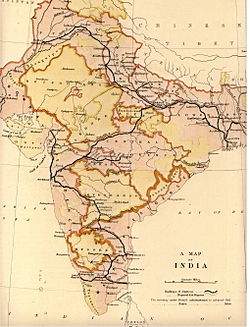





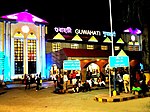



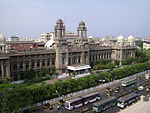

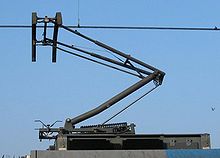

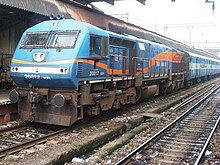


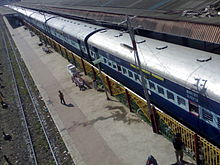
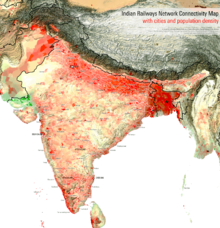
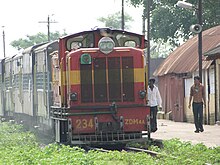
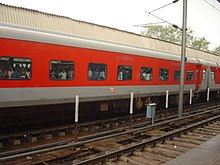
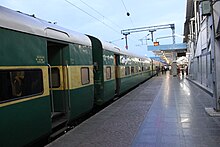
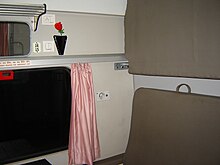


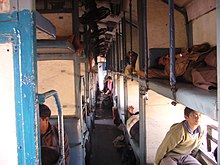

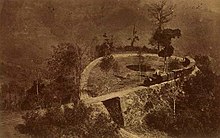

1 comment:
Rally great if someone is searching for the knowledge so it can be more beneficial than book it has each and every thing.
Thanks dear make blog on Corbett National Park which can make under to all about corbett park.
Post a Comment